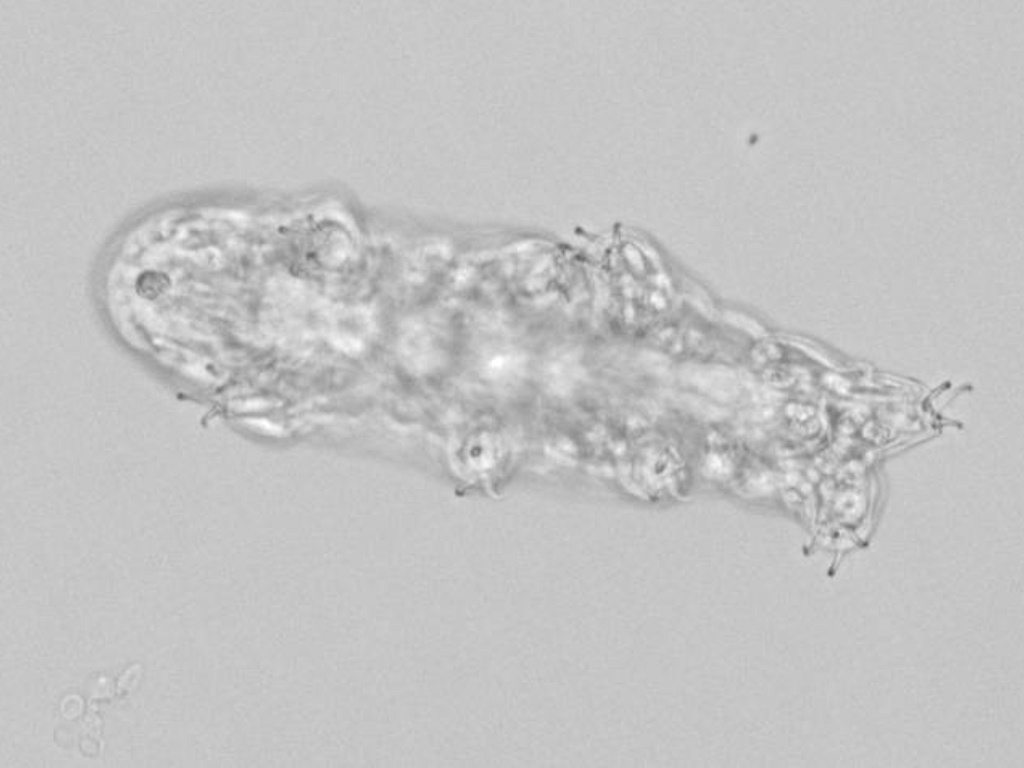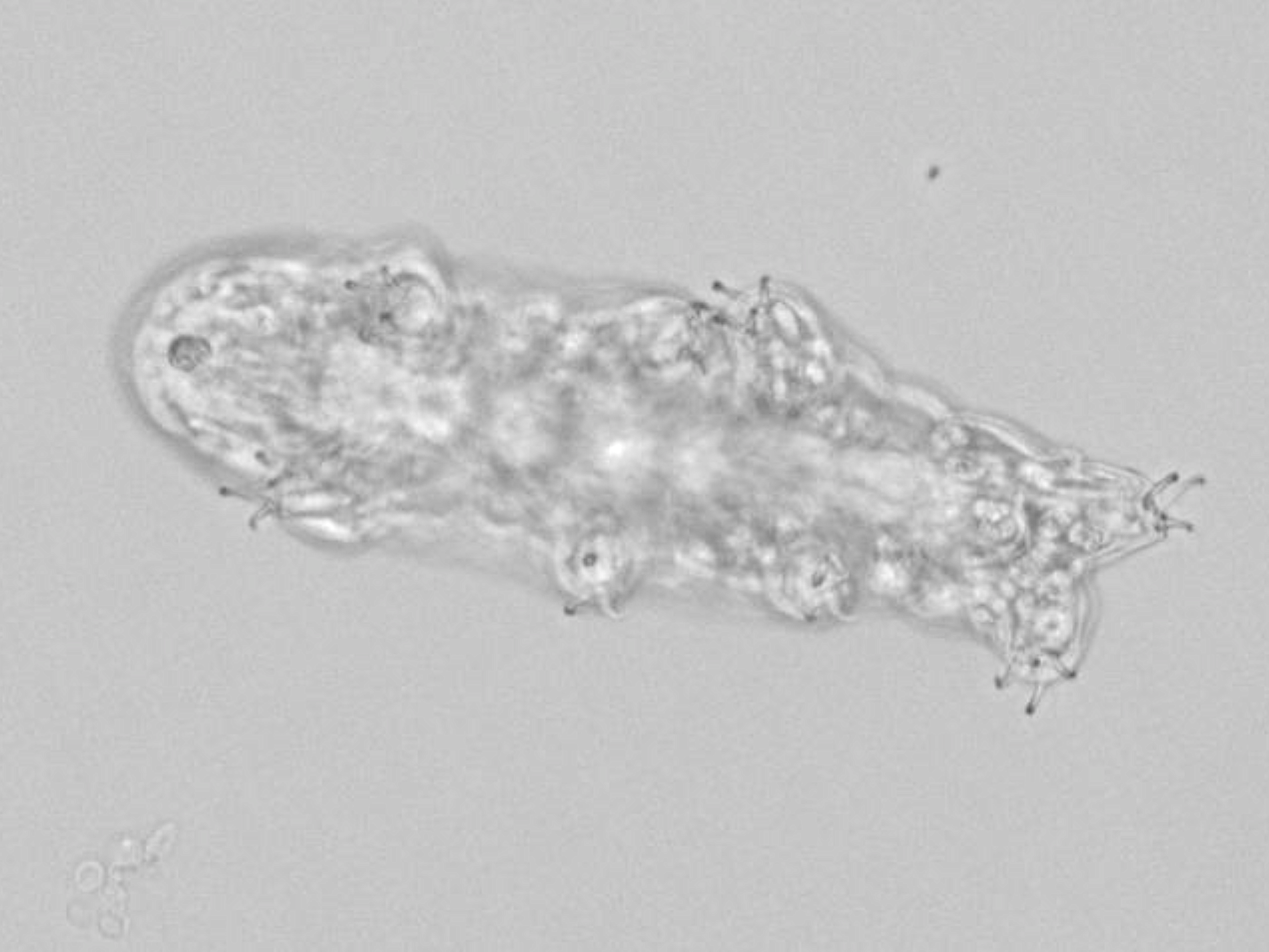
Lisset A. Duran, Deborah Johnston
- Scientists recorded video of tardigrades, or water bears, walking around on gel surfaces.
- The footage shows how these microscopic creatures with eight legs use their claws like grappling hooks.
- The videos, below, also reveal that tardigrades have similar walking patterns to insects.
- See more stories on Insider's business page.
They're cute. They're tough. They're microscopic. And apparently they're very coordinated.
Tardigrades – the eight-legged, millimeter-long animals also known as "water bears" – are fun to look at and fascinating to study. They can survive in extreme environments, including the vacuum of space, the inside of a volcano, and in an Antarctic lake nearly a mile underground. They can return to normal functioning after being frozen for three decades.
But biophysicist Jasmine Nirody is also fascinated by water bears' mundane, day-to-day activities. She wanted to learn more about how these micro-critters get around on legs with no bones.
"To me, it was fascinating that they even walk. Things at that scale don't really tend to walk," Nirody told Insider.
So she assembled a team, put some tardigrades underwater, gave them gel surfaces to walk on, and set up a camera. The resulting videos are not only cute and entertaining – they reveal that water bears use their little claws like grappling hooks, and that they walk in similar patterns to insects.
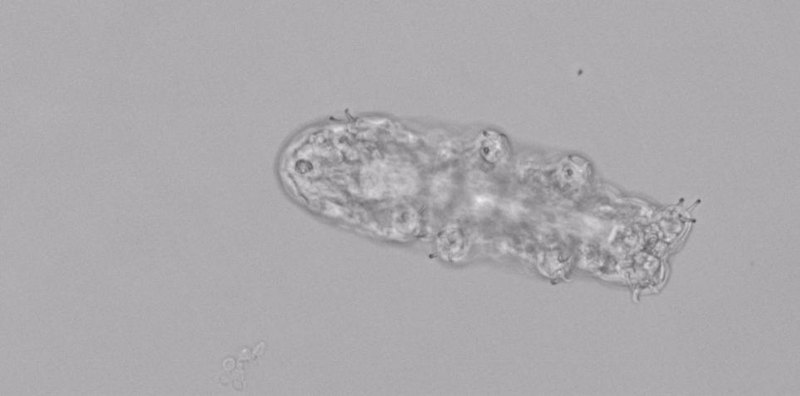
Lisset A. Duran, Deborah Johnston
"I was surprised that they were so coordinated," Nirody said. "We were surprised that they had a coordinated pattern at all."
After all, the very name "tardigrade" means "slow walker."
Glass is too slippery for tardigrades
Nirody is a fellow at both Rockefeller University in New York and the All Souls College at the University of Oxford. She and Daniel Cohen, a bioengineering researcher at Princeton University, published the new findings about tardigrades in the Proceedings of the National Academy of Sciences on Tuesday.
Graduate student Lisset Duran and high-school student Deborah Johnston filmed the videos for the study. But when Cohen watched one of the side-view videos of the team's walking tardigrades, he was convinced he was seeing "something strange."
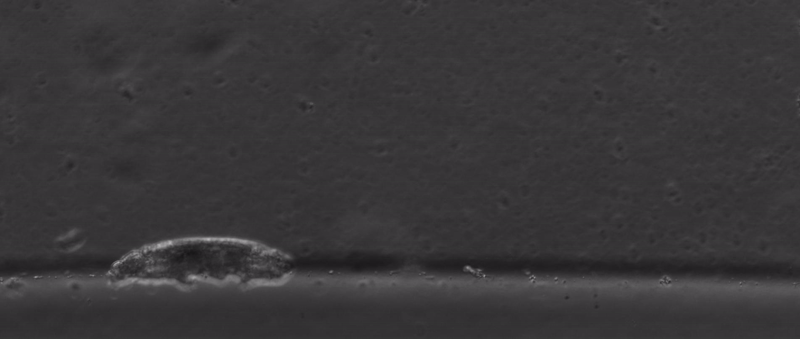
"It looks so much like a terrestrial (land-based) animal, but it was completely underwater," Cohen told Insider via email.
"They are, ironically, truly atrocious swimmers," he added. "So being able to grapple onto the ground may be a good safety measure against that."
Nirody always thought that water bears were clumsy, but she soon realized this was because she'd seen many videos of tardigrades walking on glass.
"If you put them on glass, they have nothing to grab on to, and so they slip," she said. "We have a video of them walking on glass, and they look just as silly as you'd expect them to. But that's because we're not giving them the right environment."
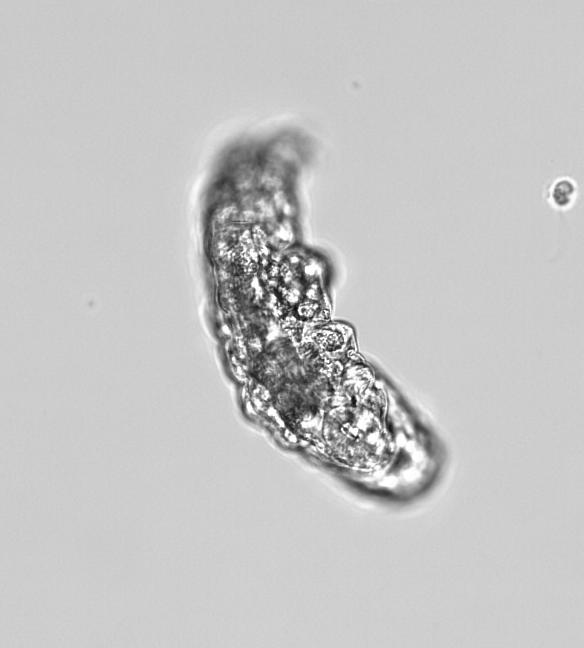
Lisset A. Duran, Deborah Johnston
"If you put a fish on land, it looks dumb," she added.
How to walk when you have 'noodles for legs'
Humans can walk because we have bones.
"When you take a step forward, and then your back leg pushes off, it essentially uses the other leg as a pole vault to swing itself over," Nirody said.
But soft-bodied animals like tardigrades have no bones. They don't have an exoskeleton, either, like an insect or crustacean does. Nirody calls their physiological situation "noodles for legs."
"You can't pole vault with a noodle," she said. "So they have to have a completely different strategy. And the way that they do it, is they use their claws like grappling hooks. They dig their claws into the substrate, and they'll pull their body forward, like we would climb a rock wall essentially."
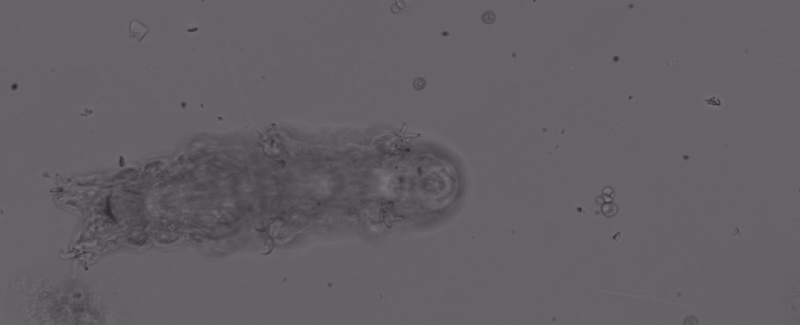
Tardigrades' walking patterns actually look quite similar to those of insects and other arthropods. This either indicates that tardigrades are related to arthropods, or that two groups of unrelated organisms independently developed the same walking strategies.
That would suggest that this method of walking is highly effective - across vastly different anatomies and sizes. It could even be a good model for small-scale robots.
"If this kind of control circuit seems to be adaptive in these two completely different systems, then that says that we have something to learn from that," Nirody said.

